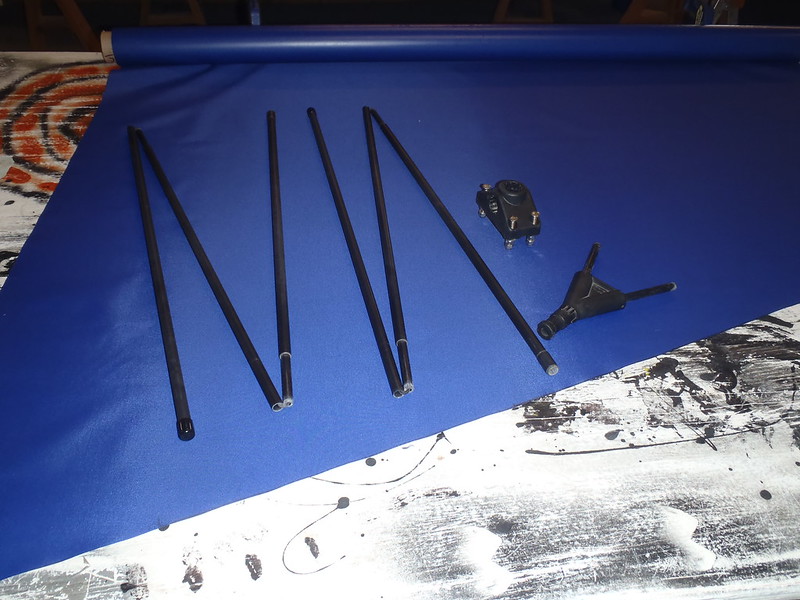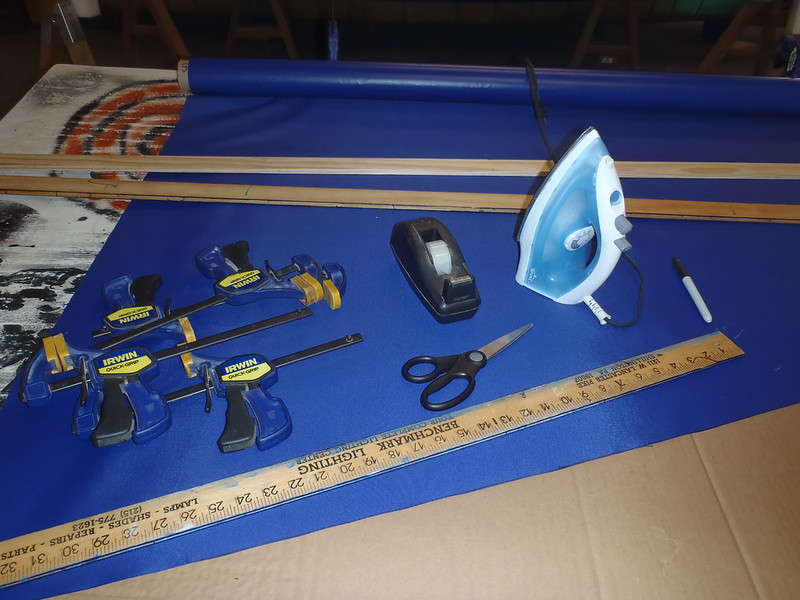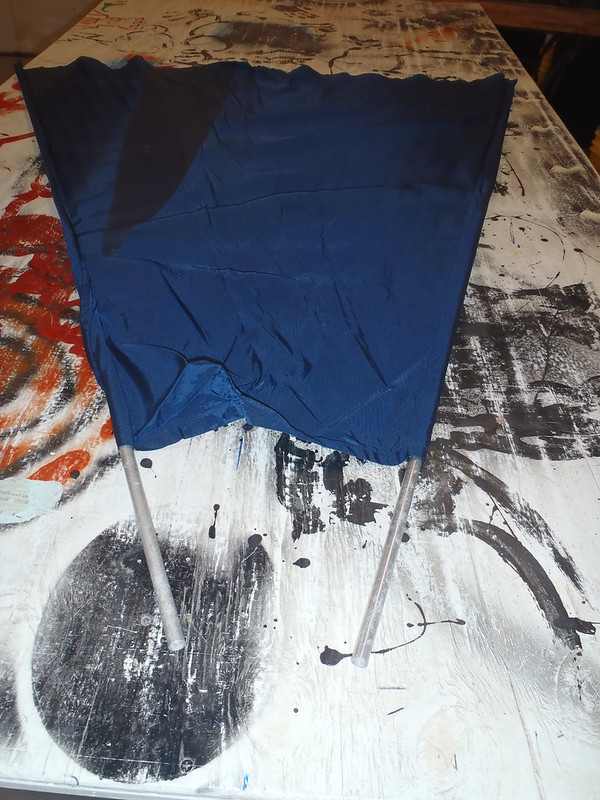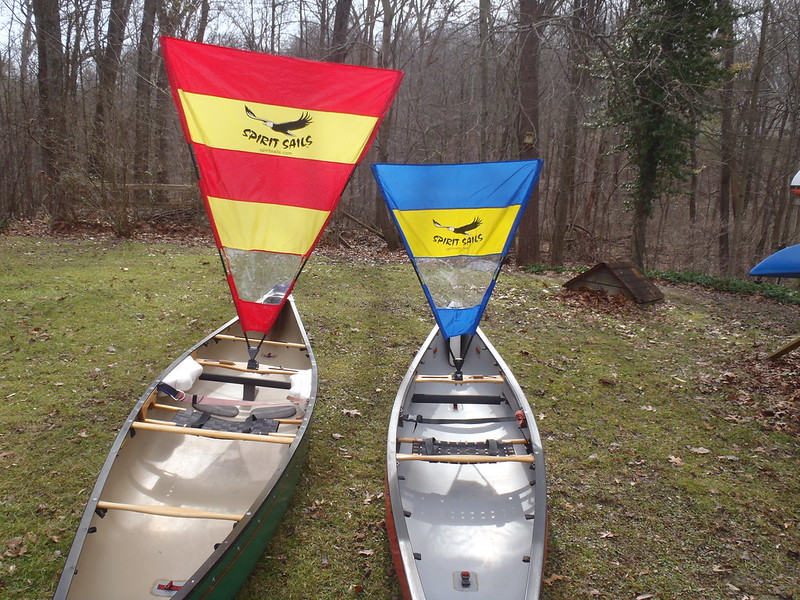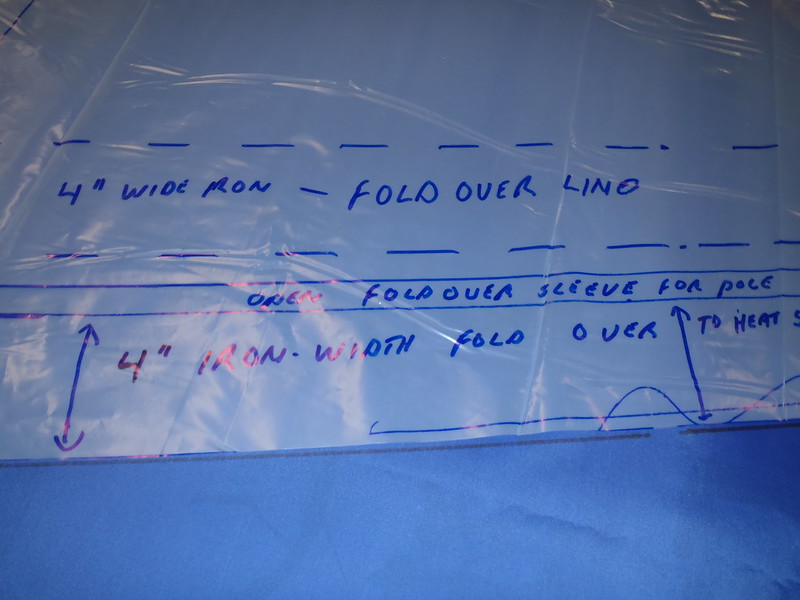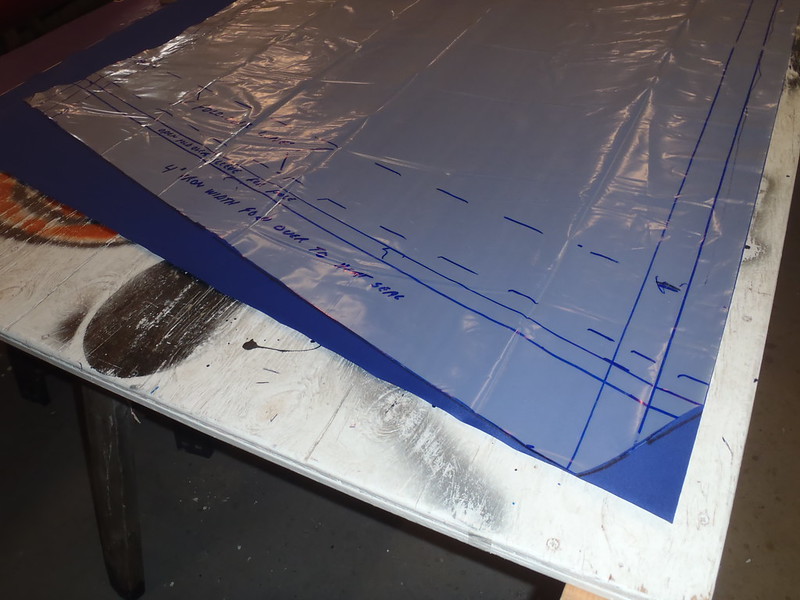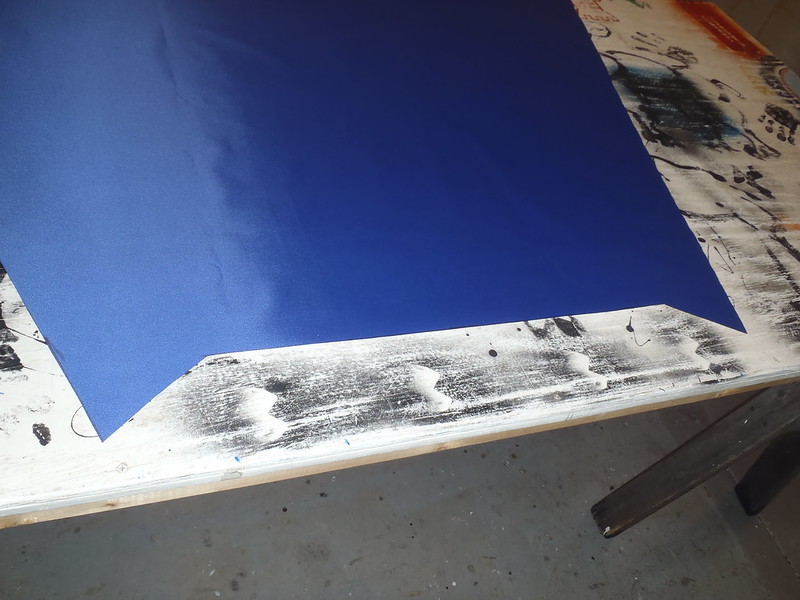G
Guest
Guest
Beyond making custom sized and shaped dry bags heat sealable fabric is wonderful for folks like me who simply do not/can not sew.
Even something as simple tarp flags are beyond my sewing ken without joining the local quilting bee. Although the cross stitch possibilities with bespoke tarp flags has potential. The Etsy version of friend Ed’s tattered Tibetan prayer flags.
https://www.etsy.com/listing/681042...MIvJS7-oDR5QIVxIVaBR3iDQchEAQYASABEgJC8PD_BwE
I just got a fresh supply of heat sealable Packcloth and I’m thinking of using that no-sewing-needed material to make a DIY Spirit Sail. I have some carbon fiber battens that fit the Sprit Sail Y connector (as do old Timberline tent poles).
A sewn fabric sail would be better, lighter, more compactable, but I do not sew any more than absolutely necessary, and another full size downwind sail isn’t a necessity, it’s more of a funsee just to see if I can make one using heat sealable fabric.
We have one larger (taller) Spirit Sail, which is far more efficient in light breezes, and scary in stronger winds, and it is kind of a PITA to three-ferrule assemble/disassemble while underway.
To that end I have some simpler assemble/disassembly thoughts in mind, and can use that OEM sail for a height and angle pattern. Should be (no jinx!) pretty simple; cut the material to \_/ size and shape, plus a couple or three inches on the sides to form an open sleeve for the battens
Instead of the smeary-view vinyl window, which sucks to look through while in a beautiful place, I’ll just end the bottom of the taller sail at eye level above the utility thwart or deck \--/, leaving an open area at the bottom of the sail for visibility ahead.
In some places (don’t know about universality) that style downwind sail is required to have a transparent window, or at least not occlude the “sailor’s” forward vision. Much of that narrow bottom V is blocked downwind by the paddler’s body in any case, and I’d rather look through clear open air than spray splashed smeary vinyl.
While I wouldn’t actually need to iron a backing piece of heat sealable on that sturdy 400 denier Packcloth, the stick-to coated side would be available, and I could. That would use up a whopping lot of yellow and blue scrap material. It would be twice as heavy as necessary, but would make for a distinctively striped pattern on one side.
I pulled out the carbon battens that fit the Spirit Sail Y connector. Yippee, I have just enough; the full size Spirit Sail uses three shock corded battens per side (the smaller one uses two per side), and I have six battens with proper ferrule ends.
Those carbon fiber battens flex and return better in gusts than our DIY sail made with shock-corded Timberline poles, and much better than the DIY downwind sail made with single piece stiff stainless steel pipes as makeshift battens, and are less likely to take a permanent bend.
Another DIY project to add to the winter list. Even if the result is mediocre I’ll have a visqueen template to improve upon, and making a larger size sail would require no more material than a big tapered dry bag.
Even something as simple tarp flags are beyond my sewing ken without joining the local quilting bee. Although the cross stitch possibilities with bespoke tarp flags has potential. The Etsy version of friend Ed’s tattered Tibetan prayer flags.
https://www.etsy.com/listing/681042...MIvJS7-oDR5QIVxIVaBR3iDQchEAQYASABEgJC8PD_BwE
I just got a fresh supply of heat sealable Packcloth and I’m thinking of using that no-sewing-needed material to make a DIY Spirit Sail. I have some carbon fiber battens that fit the Sprit Sail Y connector (as do old Timberline tent poles).
A sewn fabric sail would be better, lighter, more compactable, but I do not sew any more than absolutely necessary, and another full size downwind sail isn’t a necessity, it’s more of a funsee just to see if I can make one using heat sealable fabric.
We have one larger (taller) Spirit Sail, which is far more efficient in light breezes, and scary in stronger winds, and it is kind of a PITA to three-ferrule assemble/disassemble while underway.
To that end I have some simpler assemble/disassembly thoughts in mind, and can use that OEM sail for a height and angle pattern. Should be (no jinx!) pretty simple; cut the material to \_/ size and shape, plus a couple or three inches on the sides to form an open sleeve for the battens
Instead of the smeary-view vinyl window, which sucks to look through while in a beautiful place, I’ll just end the bottom of the taller sail at eye level above the utility thwart or deck \--/, leaving an open area at the bottom of the sail for visibility ahead.
In some places (don’t know about universality) that style downwind sail is required to have a transparent window, or at least not occlude the “sailor’s” forward vision. Much of that narrow bottom V is blocked downwind by the paddler’s body in any case, and I’d rather look through clear open air than spray splashed smeary vinyl.
While I wouldn’t actually need to iron a backing piece of heat sealable on that sturdy 400 denier Packcloth, the stick-to coated side would be available, and I could. That would use up a whopping lot of yellow and blue scrap material. It would be twice as heavy as necessary, but would make for a distinctively striped pattern on one side.
I pulled out the carbon battens that fit the Spirit Sail Y connector. Yippee, I have just enough; the full size Spirit Sail uses three shock corded battens per side (the smaller one uses two per side), and I have six battens with proper ferrule ends.
Those carbon fiber battens flex and return better in gusts than our DIY sail made with shock-corded Timberline poles, and much better than the DIY downwind sail made with single piece stiff stainless steel pipes as makeshift battens, and are less likely to take a permanent bend.
Another DIY project to add to the winter list. Even if the result is mediocre I’ll have a visqueen template to improve upon, and making a larger size sail would require no more material than a big tapered dry bag.


